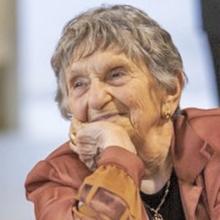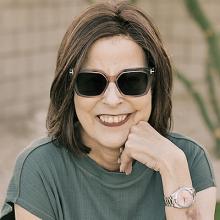Local News
Award winning architect Ed Calnitsky adds Theology degree to resumé
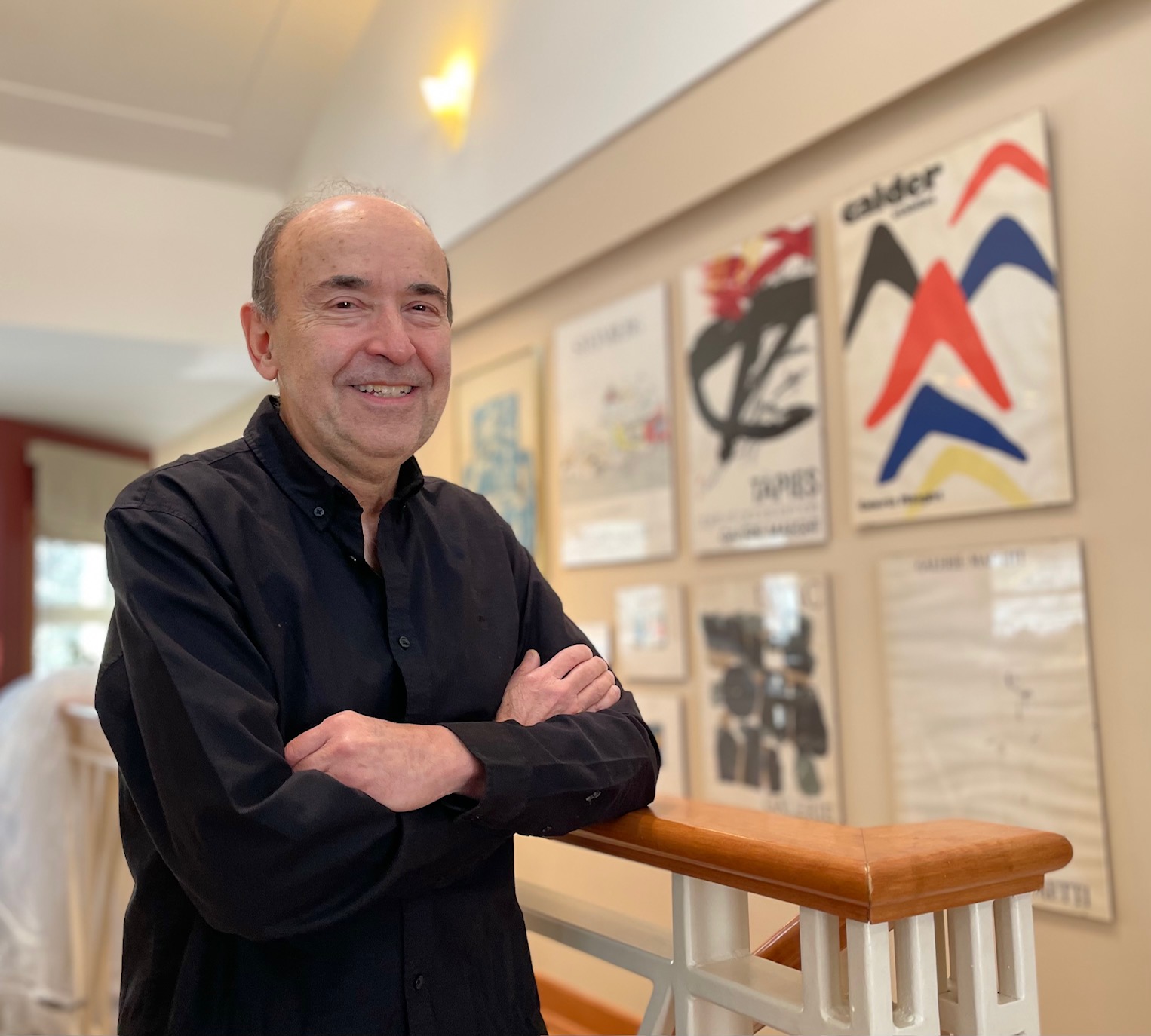
By MYRON LOVE Ed Calnitsky has recently added a notable entry to his resumé. At an age when most individuals—myself excluded—are contemplating retirement, the accomplished architect chose to return part-time to university and pursue studies in theology. About a year ago, he graduated from the University of Winnipeg with a Master of Arts in Theology and was honored with the Gawthrop Prize for achieving the highest grade point average in Theology at the University’s United Centre for Theological Studies.
Calnitsky, a graduate of the former Joseph Wolinsky Collegiate, is only one of a select few of our Jewish community to earn an MA in Theology from the University of Winnipeg.
Calnitsky has been an architect for more than 30 years, and we have been friends since high school. In the fall of 1971, the two of us—along with a mutual friend—embarked on a trip to Europe. In London, our first stop, he secured a position with a British architectural firm, where he worked for three months. Afterwards, he traveled to Israel, where an opportunity arose to work for a leading architectural firm in Caracas, Venezuela. Calnitsky spent the subsequent summer working in Caracas for that company. “Working for architectural firms in both London, England and Caracas gave me the opportunity to understand how architecture is practiced in different countries,” he recalls.
Upon returning to Canada, he was hired to teach design at Fanshawe College in London, Ontario. After three years, he returned to Winnipeg, where he met Linda, his future wife, and decided to return to university to earn a degree in architecture.
In 1986, he established Calnitsky Associates Architects Inc., a multidisciplinary architectural and interior design firm, focusing on commercial and institutional projects across Canada and in the United States.
Some of Calnitsky’s most prestigious projects have included the Canadian Embassy Reconfiguration in Kyiv, Ukraine and the Canadian High Commissioner’s Residence and CIDA Offices in Bridgetown, Barbados. Other notable projects include the new Gillam Town Centre with PSA Studio Inc. – which received a Canadian Architect Award; the Manitoba Law Courts Building renovation involving the restoration of all courtrooms and judge’s chambers; and a major retrofit and upgrade to Assiniboine Park Pavilion in Winnipeg.
Notably, Calnitsky was also the architect for the new Congregation Etz Chayim Synagogue on Wilkes Avenue. Working together with lead architect Carlos Schor and interior designers Bernice Chorney and Frances Winograd, they converted the former Khartum Shriners Temple into a beautifully functioning synagogue. Calnitsky notes that “I’ve never been a solo practitioner, I’ve always sought out a group. Designing the new Etz Chayim Synagogue epitomizes this approach.”
Among his clients are an increasing number of church groups, and in this regard, Calnitsky was recently invited by Ruth Ashrafi to speak to this aspect of his practice in a presentation to Winnipeg’s Catholic-Jewish Dialogue Group. The presentation was appropriately titled “Lessons from a Jewish Architect Designing Churches.”
“I designed my first church about 20 years ago for a Christian Reformed Church congregation in Northwestern Ontario,” Calnitsky recalls. “I had to design it from scratch and knew virtually nothing about Christianity or Church architecture.”
Determined to educate himself, he began researching these subjects and found his interest deepening. “I gained valuable insights into the relationship of Christian theology and church architecture. Church architecture is a reflection of Christian theology, and its understanding is integral to the design.”
Currently, Calnitsky is working on churches in Winnipeg for Coptic Christian, Ethiopian, Nigerian, and Eritrean congregations—the latter involving renovations to the former Rosh Pina/Congregation Etz Chayim building on Matheson Avenue.
What surprised him most, Calnitsky notes, is the significant influence of Judaism on Christian theology, as well as the historical animosity that Christianity has often held towards Judaism. He points to an example of this hostility in the placement of stained glass windows within churches. As worship is oriented east to the altar, stained glass windows are typically located in the north and south walls, with the south walls receiving more sunlight and therefore, appearing brighter. Consequently, scenes from the Hebrew Bible are often depicted in the windows of the darker north wall, while the New Testament windows bask in sunlight.
“While the Romans violently suppressed the Jewish rebellion in 70 AD, they largely tolerated Jews throughout the rest of the empire,” Calnitsky observes. “It was only after Roman Emperor Constantine adopted Christianity as the official religion of the Roman empire that widespread demonization of Judaism began.”
Calnitsky notes that “for centuries, Christian scholars and theologians perpetuated a distorted view of Judaism as a legalistic religion of “works-righteousness” filled with empty rituals and practices that earned one salvation through a merit-based approach. Christianity, in stark contrast to Judaism, was portrayed as a moral, universalistic religion of grace, love, and forgiveness. Generation after generation, Christian teaching of contempt towards Jews characterized Judaism as the perfect dark background against which Christianity could shine all the more brilliantly.”
He notes that it was only after the Holocaust that Christian theologians began to reconsider their views about Jews and Judaism. Pope John XXIII and the Vatican Council in 1963 began shifting Catholic attitudes towards Jews. However, the true turning point occurred in 1977 with the publication of Paul and Palestinian Judaism by New Testament scholar E.P. Sanders. Calnitsky highlights how Sanders’ research into Jewish scriptures debunked the long-standing misrepresentations of Jews and Judaism by Christians, often without ever engaging with Jewish perspectives.
His own master’s thesis examined Pauline scholarship and Jewish-Christian dialogue, emphasizing the need to read the Apostle Paul within a Jewish context. “Paul did not convert to Christianity, nor was he anti-Jewish,” Calnitsky asserts. “He understood his calling to be turning pagans from their own gods to the god of Israel through Christ; he didn’t believe the Jews needed saving.”
Recently, Calnitsky was invited to present a paper on the Apostle Paul at the annual conference of the Canadian Society of Biblical Studies at McGill University. His paper, entitled “The Architecture of the Apostle: Reconstructing Paul,” affirms the position that Paul was not a Christian, and should be understood within the framework of Judaism. Paul had no issues with Jews and Judaism, and his gospel was about messianic salvation for Gentiles and pagans, leaving the Jewish covenant with God intact, with no supersession of Judaism by Christianity and no end of days conversion to Christ.
Despite this evolving attitude among Christian theologians and scholars towards Jews and Judaism, Calnitsky remains cautious, expressing skepticism about whether the persistent scourge of anti-Semitism will ever fully dissipate.
As for architecture, Calnitsky has not lost his love or enthusiasm for his work, stating that “I believe that you should never stop doing what you love.”
Local News
Cheryl Hirsch Katz, Jewish Child and Family Service’s longest serving staffer, set to retire at end of the month
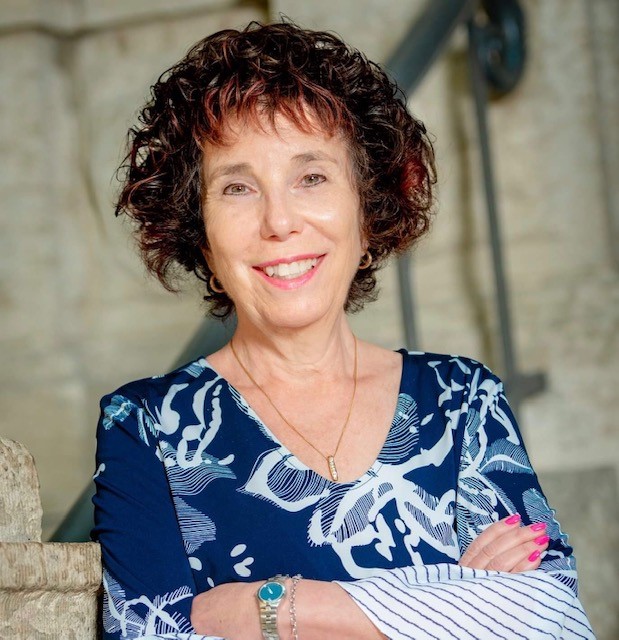
By MYRON LOVE “I loved working at Jewish Child and Family Service,” says Cheryl Hirsh Katz, who is due to retire at the end of June. “I have always appreciated the warm and welcoming atmosphere here. I feel that the people working here are my extended family. I am going to miss my colleagues”.
“I have derived great satisfaction over the years to have been able to help many people in our community of all ages through my work at JCFS,” she continues.
After 44 years at the agency, Katz, the longest-serving member of the staff, was given an appreciative send-off at the JCFS’s recent (June 23) Annual General Meeting at the Shaarey Zedek Synagogue.
The daughter of Art and Bess Hirsh, Cheryl grew up in Garden City. She attended Peretz School, then Jefferson Junior High and Garden City Collegiate. She joined the staff of JCFS in 1981, shortly after receiving her Bachelor of Social Work degree.
She earned an MSW in 1990.
“I chose to become a social worker,” she recalls, “because I always wanted to be able to help people.”
Katz was originally hired by JCFS to work with newcomers. After a couple of years, she was given responsibility for looking after the needs of older adults.
“I really enjoyed working in older adult services,” she says. “That is where I spent the bulk of my time at JCFS.”
After ten years as a case worker, she was promoted to a supervisory role. Later, she was also given responsibility for mental health and addictions programming and settlement services, while keeping the older adult files under her purview.
“As a supervisor, I wasn’t directly involved with individual clients,” she points out. “I was more involved with programming. Among the programs for seniors we organized were – for example – sessions on elder abuse, digital storytelling and memory loss.”
She notes that one of the trends she has seen over the last 44 years is that people are living longer and living in their homes longer. A lot more of our clients are living well into their 90s,” she observes. “We have had to continually expand our staff and the services we provide in order to accommodate the growing demands of an aging population.”
She also spoke of the mental health needs of seniors and aging Holocaust survivors.
She says that she has mixed feelings about leaving JCFS. “After so many years working full time, I am going to have to create a new routine,” she comments.
She notes that, now that she is retired, she will have more time to spend with her parents – who are in their 90s.
And then, there are the two dogs to look after. “I will have time now to try new activities,” she says. “ I might learn to play mah-jong.”
She speaks about maybe doing some traveling – although her husband, Murray, is still working full time.
(She and Murray have one daughter, Farah.)
“Retirement may also include some volunteering,” she adds.
It is quite likely, she will be continuing her association with JCFS but in a volunteer capacity.
Local News
Gray Academy students shine in provincial, national debating competitions
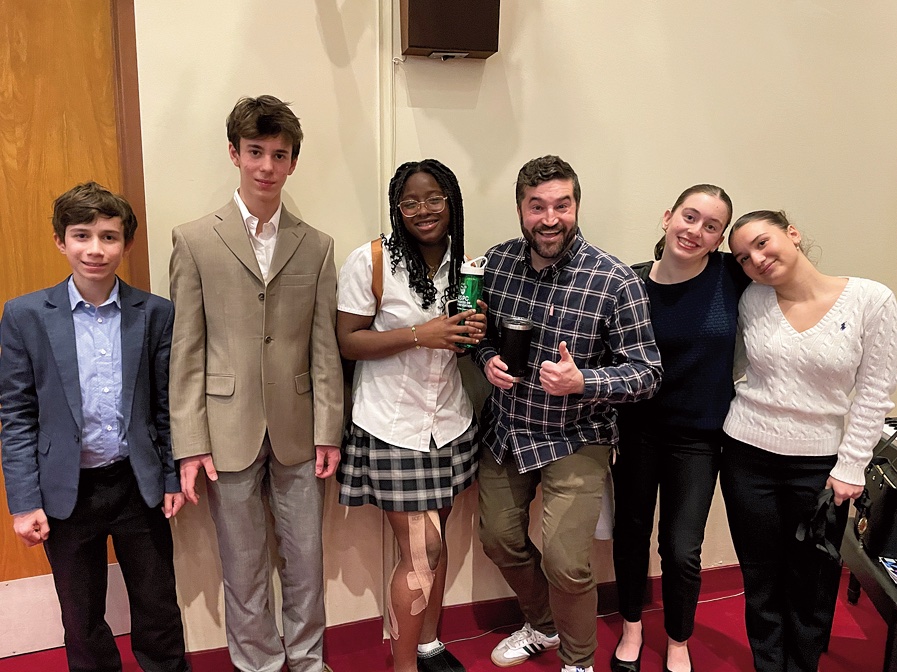
By MYRON LOVE It has been another good year for Gray Academy’s high school students who participated in provincial and national debating competitions. The best results were recorded by Grade 9 student Noa Mednikov, who finished fourth overall nationally, fourth in interpretive reading, and fifth in persuasive speaking at the junior National Public Speaking Championship in early May in Vancouver.
Last October, in the Junior Provincial British Parliamentary Championship – which was held at St. John’s-Ravenscourt – Noa and her partner, Raya Braunstein, finished third as a team while Raya placed third in individual debating.
Their fellow Grade 9 student Maxim Moscalenkov tied for first in persuasive speaking in Vancouver, while the Gray Academy team of Gabe Tapper and Aaron Koplovich finished fifth. Aaron also finished fifth in his individual debate.
Earlier, in March, Maxim finished fifth in the Provincial Juniors debating competition, which was held at Balmoral Hall He and his debate partner, Nate Shenkarow, finished seventh among the teams entered. Last November, he and partner, Ethan Tenenbein, finished seventh in the Junior Prepared Tournament – just behind the Gray Academy team of Nate Shenkarow and Jack Kay.
At the senior high level in that competition, the team of Jacob Tenenbein and Jonah Novoseller finished fourth and Jacob was recognized as fifth best in an individual capacity. Jonah and Jacob also paired up to win the Asper Cup, which was held at their home school.
Jacob represented Manitoba at the Junior National Speech Championship in Vancouver in May and, last October, he and Grade 12 Gray Academy students Julie Krozkin and Daniel Bokser represented Canada at an international debating tournament in Bermuda.
Gray Academy’s debating program was introduced by Linda Martin in 2003. She also led the debating teams at Balmoral Hall. In 2011, Martin was succeeded by Gray Academy high school English teacher Andrew Kaplan.
“Andrew has done a wonderful job with the debating program” says Martin, who has a debating trophy at Gray Academy named in her honour, as well as a provincial trophy for best individual junior debater. “Over the years, Gray Academy students have done very well in many local, national and international competitions,” she adds.
About three weeks ago, this writer had the opportunity to sit down with Andrew Kaplan and six of the school’s top debaters while they discussed the benefits of learning how to debate. According to Noah Strauss – who competed in the Junior Provincials at Balmoral Hall in March, public speaking leaves him with a feeling of accomplishment.
“It’s a good skill set to have,” he observes. “It builds confidence.”
“A benefit of being able to debate is that you learn how to convince people that you know what you are talking about,” adds Maxim Moscolenkov.
Raya Braunstein notes that being able to debate is a skill that she expects to be helpful in many university courses which she may choose to take.
As Andrew Kaplan notes, the ability to express yourself has a great impact in whatever career you choose to pursue.
He points out that debating is compulsory at Gray Academy for all Grade 7 and 8 students – and students can continue debating as an option in the higher grades
Of course, competitive debating is not for everyone. For those students who opt to take that path, the journey begins with internal school debate competition – with the top debating teams and individuals qualifying for local tournaments and – potentially – beyond.
Andrew Kaplan reports that a small number of high schools in Winnipeg and southern Manitoba have active debating programs – including St. Johns Ravenscourt, St. Paul’s High School, St. Mary’s Academy, Garden City and Maples Collegiates in the Seven Oaks School Division, St. Maurice (a Catholic School), as well as Morden Collegiate and Dasmesh, a Sikh private school.
Kaplan expresses his appreciation to the Asper Foundation and an endowment spearheaded by the Kives Family for providing funding for the Gray Academy debating program – as well as the Andrew Slough Foundation – which was established by his friends in memory of the outstanding former Ravenscourt student debater and lawyer who passed away suddenly two years ago at the still young age of 38.
I am confident that our Jewish community can look forward to the continued success of Gray Academy’s star debaters and to the continual emergence of future stars as the times goes by.
Local News
Antisemitism has crept into grade school in Canada
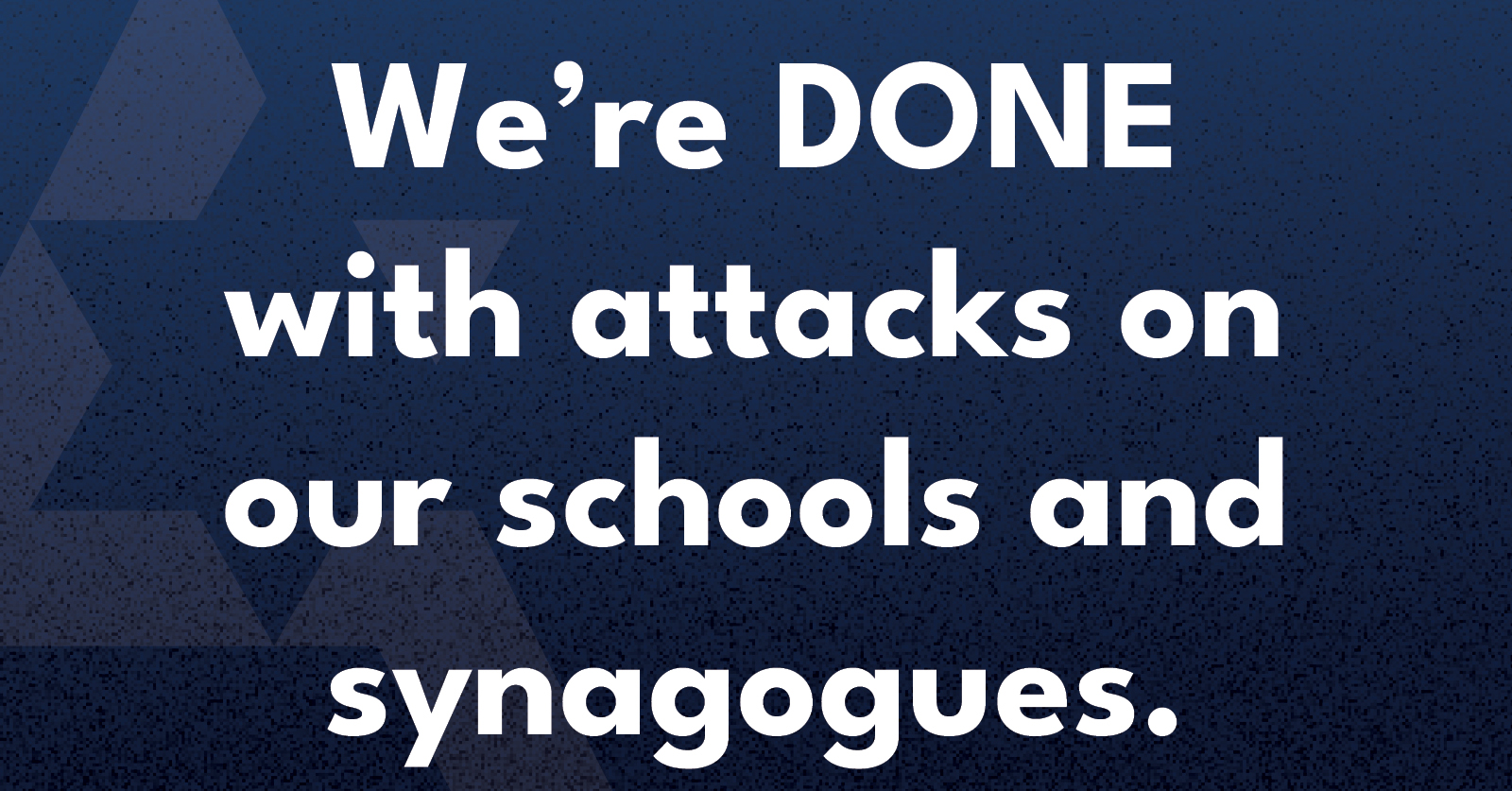
Antisemitism in Canada has moved beyond protests and politics; it is now entering classrooms and altering how Jewish children see themselves functioning within them.
A a university student I have observed the experience of my younger brother in grade eight as a Jewish student. Over the past few months, his school has been at the center of several deeply troubling incidents that have made him feel unsafe in our parks, community, and even his school. Swastikas were drawn around the community, in parks and ponds. Additionally, an older man, who claims to be a pro-Palestinian influencer, stood outside his predominantly Jewish school wearing a keffiyeh, filming a video which then circulated between students on TikTok.
This same man later showed up to our local Jewish community center in keffiyeh to allegedly watch his son play basketball where my brother and many of his classmates go for their lessons, basketball games, and Jewish events. These moments made him and his peers feel watched and targeted just for being Jewish. Local political representatives condemned the incidents and raised awareness about antisemitism, but the fear among students didn’t go away. The feeling of being targeted for simply existing has been taught to my brother, something my parents had tried their hardest to escape from.
Most recently, my brother was chosen to represent his school at a regional science fair. When one of the judges arrived wearing a keffiyeh, he froze. For many, including my brother after the incidents he has faced, the keffiyeh represents a political message. But even more so for my younger brother, it is tied to the fear and intimidation he had already experienced. He felt nervous, distracted, and unsure of how to act.
This is not about silencing political expression. It is about a child who came to share his ideas and left feeling uncertain and afraid. It is about the atmosphere forming in Canadian schools, where Jewish students are being made to feel targeted and unwelcome.
His school made an effort to address the incidents, but the impact is lasting. Posts on social media, much can be very vague at times about inclusion cannot fully undo the feeling of being singled out. A kind word from a teacher does not erase the fear that builds when threats are left unspoken but deeply felt.
I am writing this as a sister who watched her younger brother lose a moment that should have been filled with confidence and pride. He deserved to feel safe. So do all Jewish students in this country.
Moving forward, schools must take concrete steps to protect all students. Antisemitism cannot only be addressed when it becomes violent or overt. It must also be recognized when it appears as intimidation, symbolic targeting, or political messaging that creates fear among students. Children should never have to question whether they are safe in their own classrooms or community spaces.
Events that are meant to support and celebrate students must remain focused on them. Individuals who feel the need to bring political symbols or messages into school grounds or children’s events should not be welcomed in those spaces. Schools must make it clear that their environments exist to support learning, safety, and inclusion, not to host agendas that can intimidate or isolate students.
Administrators and educators must develop clear guidelines for identifying and responding to antisemitic behavior in all its forms. This includes strengthening security measures, offering ongoing staff training, and engaging directly with Jewish families to understand their concerns. Inclusion is not a one-time statement. It is a responsibility that must be reflected in everyday decisions and actions. No child should ever feel unsafe or unwelcome because of their identity.
The author is a Campus Media Fellow with HonestReporting Canada and Allied Voices for Israel who lives in Toronto.

